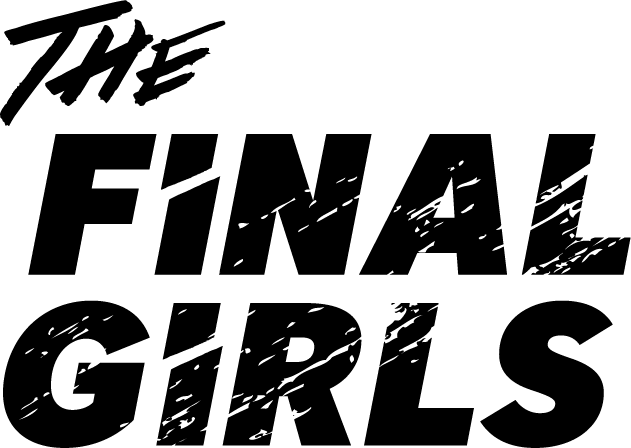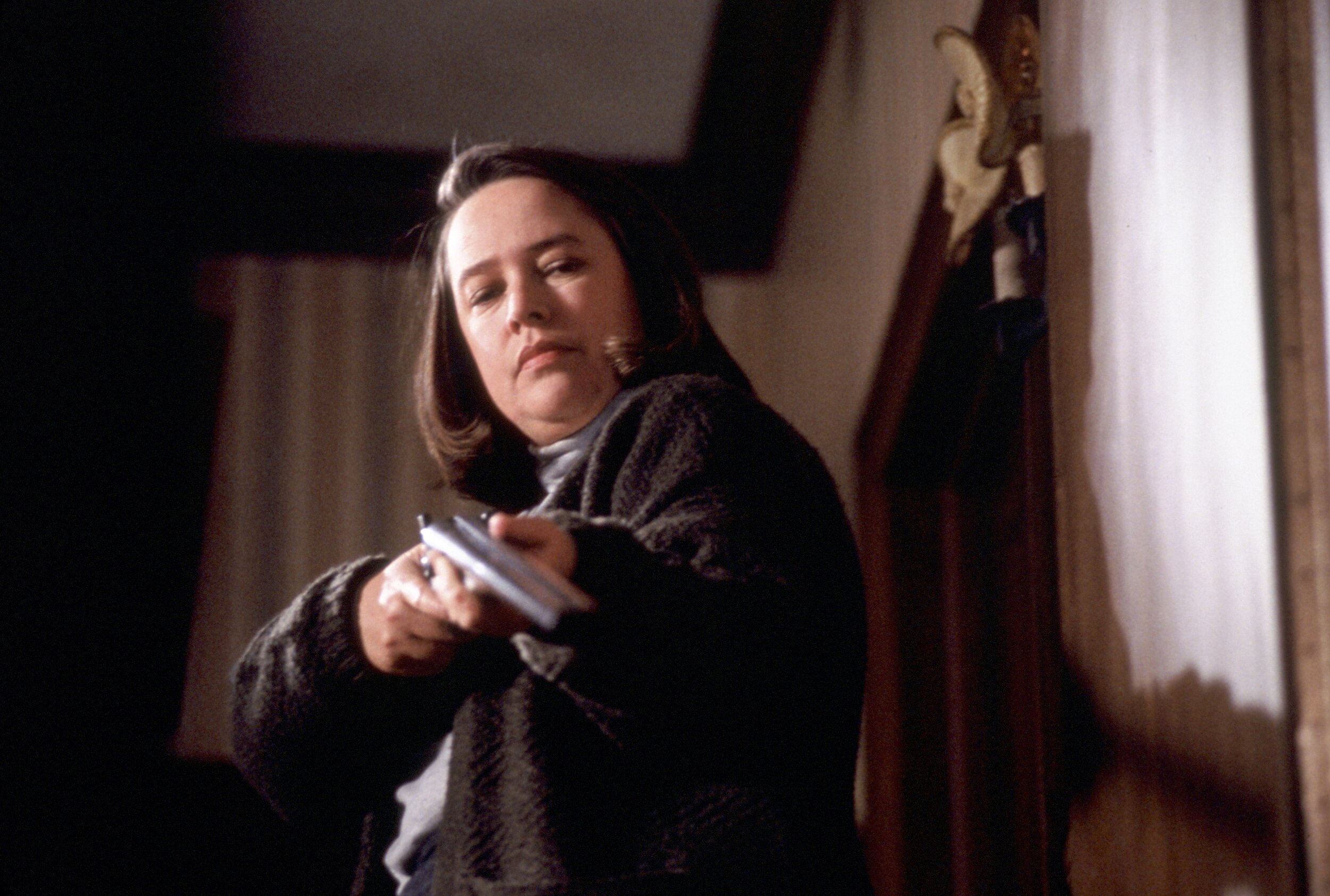Annie Wilkes: A Different Kind of Femme Fatal
When we first meet Annie Wilkes (Kathy Bates) in Rob Reiner’s Misery (1990), we don’t actually get a good look at her. She bumbles through the storm like a winter-clad Ewok, short, stout and genderless. She is able to drag Paul out of his wrecked car and off into the snow with disturbing ease. This couldn’t be a woman, could it? Are women of her stature really that strong? Delivering the kiss of life to James Caan’s Paul Sheldon is the first glimpse we get of Annie’s unique sexual behaviour. She is saving his life, but there is a part of her that has waited for this moment for so long. Paul and his manuscript are finally hers...
Before Annie, 1980s horror gave us an assortment of female villains that could quite neatly fit into a binary of either sexual or non-sexual. The majority inhabit the role of an attractive and critically dangerous femme fatale. These villainous women exist to pose a threat to male protagonists or to draw stark comparison with the purer idea of the “final girl.” They are represented as predators wearing enticing female skins, women using sexuality for nefarious purposes featuring in each sub-genre of horror, from slasher to sci-fi, from creature feature to erotic thriller. To be frank, these women are physically gorgeous and so it seems natural that their sexual appeal - and their behaviour as a result of this - could be used as a weapon?
If we take a whistle-stop tour of 1980s horror, we can see the pattern of this binary. In the twisty little slasher, Happy Birthday to Me (1981) Ann Thomerson (Tracey E. Bregma) lures her victims with the subtlety of one too many buttons left undone. She is young, beautiful and preppy, a cheerleader archetype, even after skewering her classmate in the throat with a kebab stick. The female villain (Mathilda May) in Lifeforce (1985) isn’t even given a name, she is simply titled: “Space Girl.” She spends the entire first half of the movie completely nude and is described by a male scientist as “sexual” and “horrible” in the same breath. Glenn Close as Alex, the original “bunny boiler” in Fatal Attraction (1987) is the epitome of hypersexuality. She uses the intensity of her sexual aesthetic, along with the sexually liberated connotations of salsa-dancing to exercise control over a seemingly perfect family man.
This obsession with “attractive” sexual villainy did not leave much space for older women, or for women who did not entirely encapsulate that specific sexy 80s femme fatale look. The small percentage of desexed female villains are stripped of their sexuality because of age and maternal instinct. Pamela Vorhees (Betsy Palmer) in Friday the 13th (1980) and Emma Spool (Claudia Bryar) in Psycho II (1983) want nothing more than to avenge and protect their sons, but 80s cinema perpetuated the idea that age, a lack of conventional attractiveness and motherhood prohibits women from being able to use their sexuality in any way. In fact, Pamela is disgusted by sexuality; in her eyes it led to the death of her son.
My quarrel with this 80s binary of sexual and desexed women is that it suggests a very narrow view of female sexuality. The implication is that female sexuality is dangerous but only if its host looks like “Space Girl,” Ann Thomerson, or Alex Forrest. Why were so many iconic villainous women reduced to their sexuality? Where was the balance between dangerous sexuality and sexual ignorance and disdain? Why were the conventionally attractive female villains allowed to use sexuality as a weapon but Pamela and Emma couldn’t? This is where Annie Wilkes comes in.
Let’s take it back to our second introduction to her, that striking low angle shot, a terrifying establishment frame for the villain we’re about to encounter. Annie is without a scrap of makeup, her hair is chopped into a tight bob and her style is cottage core meets Little House on the Prairie in its innocence: high collar shirts and cable knit cardigans, culottes and loafers in moody shades of grey and brown. Religion hangs about her neck, the silver cross with explicit implications of purity and desexualisation. We could certainly be fooled into thinking that Annie fits into the non-sexual part of the pre-established binary.
But, when you look closer, a disturbing sense of sexuality can be seen in the way that she cares for Paul; it becomes a kink of sorts. Her fingers remain in his mouth just that little bit too long as she administers his medication. She jumps between a matronly/motherly figure and a sexual being, her cross always in pride of place upon her chest to remind us that she believes in purity. There is something so chilling about the playful and flirtatious way in which she shaves Paul, caressing his face in an act of care that reeks of unsettling intimacy. Even after the infamous hobbling scene she breathlessly declares her love for Paul in a sadomasochistic state of arousal. This sexual behaviour contrasts so strongly with her childlike use of language, “oogie,” and her bumbling persona. It could also be assumed that Annie’s fascination with the Misery novels stems from a deep-seated romantic and sexual desire.
Annie differs from the recognised cinematic ideas of sexual and non-sexual female villains. Annie’s sexual behaviour is confused, conflicted and often sinister. Her look, clothing and mannerisms don’t fit with the idyllic 80s image of female sexuality but, like the traditional femme fatale, Annie’s sexuality is dangerous; she lusts after Paul and uses this passion as fuel for her violent crimes. Rob Reiner endorses this theory of Annie and her perverse sexuality by comparing her demise to “a last orgasm.” This symbolic final image of Annie fits with her unconventional sexuality, if only she had been allowed to survive…
Annie is both sexual and sexless; she sways dangerously between dowdy desexualisation and sexual fiend. Unlike the traditional femme fatale, Annie isn’t placed under the male gaze, we don’t see her in a state of undress - her buttons are firmly fastened right up to her chin. She isn’t given a definitive moment of sexual tension with her victim, instead he is repulsed by the unpredictable nature of her sexuality throughout. She is allowed to be sexual without the reciprocation of her victim and without being glamourous. Her sexuality belongs to her and her alone. Yes, it is grotesque and sadomasochistic, but I think it was needed after the sexual/non sexual binary of the previous cohort of female villains. Annie treads her own path, leaving bloody penny loafer footprints and hobbling the string of 80s femme fatales that came before her.
Beanie Aurora White is a prose and short fiction writer from Wiltshire. She has recently graduated from Royal Holloway University with an MA in Creative Writing. She has work in The Ghastling and is currently working on a YA horror/fantasy series and an anthology of short fiction looking at women and trauma under the guise of surrealist based horror
We've been going independently for years now, and so far have self-financed every single project. In order to do more work, and continue supporting amazing filmmakers in the genre space, we've launched a Patreon.
If you are able to support us and the work we do on Patreon, we'd truly and deeply appreciate it.


